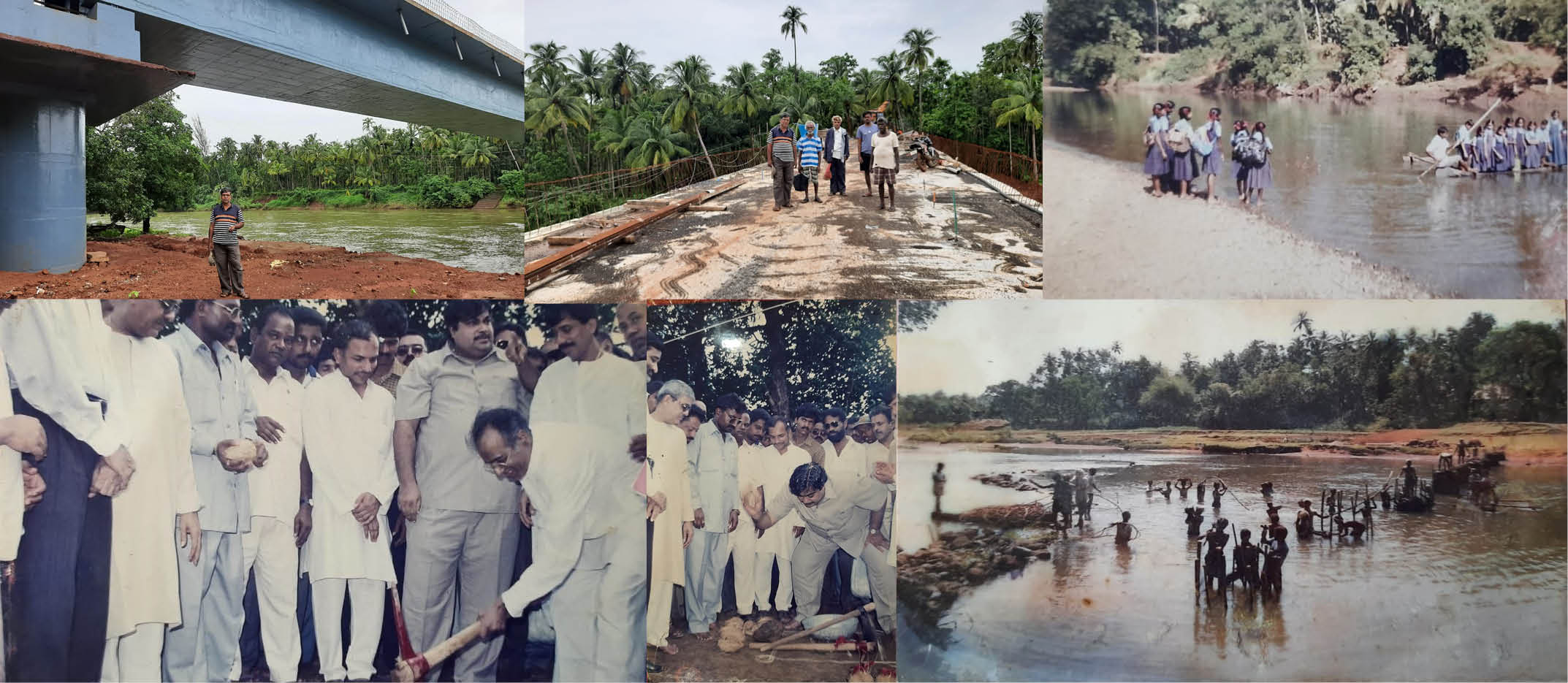Sindhudurg: It took three long decades for the residents of Aroswadi, a settlement of 800 people located in Banda (the last village on the Maharashtra-Goa border), to realise their “dream” of having a bridge.
The hamlet, located on the banks of the Terekhol river, first demanded a bridge way back in 1988. Villagers claim the demand was a legitimate one as the residents, including school children, were forced to cross the river by boat, which would often topple due to the river’s strong currents. Many locals lost their lives while crossing the river.
Arjun Yashwant Chandek, a long-time resident of the village, claims that their many requests were categorically ignored over the years by the earlier ruling Congress-NCP governments because the village was considered to be a strong supporter of the Rashtriya Swayamsevak Sangh (RSS).
“It was Ganpat Sitaram Kalsekar who first set up the headquarters of the Jan Sangh (as it was known then) in Aroswadi in the 1940s. He was a permanent candidate for every election. Although he lost each time, he managed to increase the party’s footprints across the Konkan region,” says Arjun, adding that Aroswadi was the first village in the Konkan region where the Sangh gained a foothold and that benefited not only the Bharatiya Janata Party in the long run, but its alliance partners as well, mainly the Shiv Sena.
“In 1987, Shiv Sena leader Gajanan Kirtikar had visited this village by ferrying himself by boat. He was aghast to see how we used travel and promised to speak to the higher authorities for a bridge. He had come during the monsoons when the river becomes five times its size and was drenched to the core,” says Sanjay Yeshwant Chandek, a resident of the village and the person who first raised the demand for the bridge in 1988.
Despite making several rounds of the Mantralaya for years, in 1993 Sanjay, along with other villagers, finally decided to construct a bridge themselves. The village raised funds to build one comprising stones, bamboos and leaves from the areca nut tied with locally available Dharashi Vel or creepers. It took eight days and 40 people to construct it.
When the BJP-Shiv Sena government came to power in 1995, the residents approached the then Public Works Department (PWD) Minister Nitin Gadkari, who sanctioned a concrete bridge and even made a trip to the village to perform the stone laying ceremony.
“The Bhoomi Poojan was performed on 20 May 1999 and six months later, the government fell. We were back to square one,” says Sanjay, adding that he later approached PWD ministers of the later governments, namely Chhagan Bhujbal and later Vijay Singh Mohite Patil, but in vain.
“It was only in 2016 when the BJP government again came to power in the state and Chandrakantdada Patil became the PWD Minister that we met and briefed him on the situation and things began to move fast. The work on the bridge finally commenced in 2018 and is now showing signs of completion. We hope it will be inaugurated soon,” says Sanjay, adding that the 150-metre-long bridge is being constructed at the cost of Rs 12.75 crore by Trimurti Constructions and will connect both Maharashtra and Goa and the many small villages through which the Terekol river flows.

